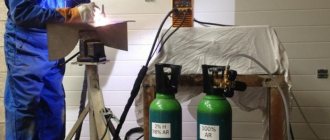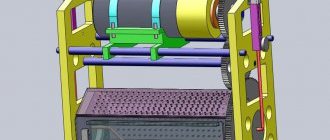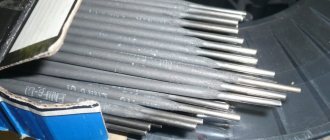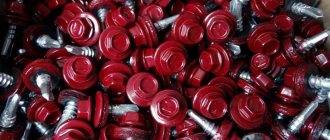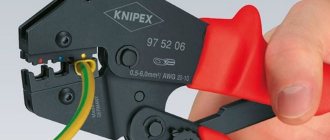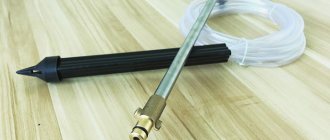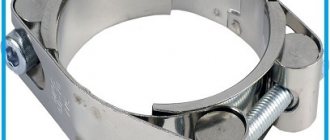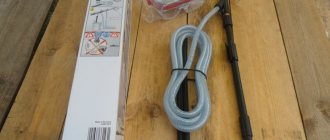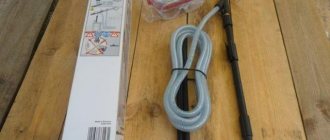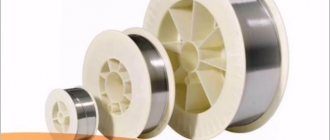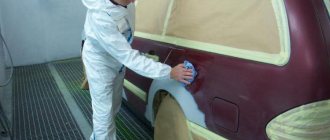Cleaning in an ultrasonic bath
Today, cleaning surfaces using ultrasonic baths has become commonplace. Ultrasonic baths are used in almost all types of industry, but are most popular in jewelry, electronics repair, cleaning personal care items, and auto repair shops.
However, buying a cleaning device is one thing, but finding a specialized liquid for an ultrasonic bath is quite a difficult task. As a rule, in cases where it is impossible to buy a special liquid, it is made independently.
Before you go buy liquid for ultrasonic baths , you need to clearly define the scope of use. Why? Because one type of liquid is suitable for cleaning one material, but when used in another profile it will not show results.
That is why you need to carefully select the area of use when purchasing a cleaning fluid. Below are examples of how you can prepare the liquid manually. The main thing to understand is that the basis of any cleaning liquids is a simple composition. Typically this is water or alcohol. And when creating a solution, you need to choose what base you will use.
Alcohol is used in cases where it is necessary to wash the circuit boards of mobile phones or other electronic equipment. Alcohol allows you to avoid creating short circuits between parts on the board (transistors, resistors, chips, etc.).
As you know, alcohol is a dielectric. Moreover, the use of alcohol will be justified in cases where it is necessary to clean the surface of compounds that exhibit hydrophilic properties (resistant to water).
Water is used when cleaning more delicate materials such as jewelry. In addition, water itself is already a good cleaner, although it does not show such good results as when combined with a surfactant. Surfactants, or surfactants, are used in combination with water.
The simplest surfactant is a soap solution. You can use a soap solution when washing fabrics, washing injectors and car parts. In addition, you can use washing powders, car shampoos, and dishwashing detergents. In mass purification, it is recommended to purchase cheaper chemical additives for water in bulk, such as Sulfanol NP, Neonol.
In addition to water and alcohol, there are special cases of using gasoline, kerosene and other similar materials. The specialist needs to be careful when using such liquids for ultrasonic baths , as they ignite quickly.
Can you tell me what homemade detergent is best for cleaning nozzles in an ultrasonic bath?
Do not offer flammable substances.
Rating review
Ultrasound camera CODYSON CD-4820
Suitable for processing any metal tools. Effectively removes residues of manicure products - acrylic, gel, as well as particles of biological material. Ideal for beauty salons and offices with high traffic, as it is equipped with a spacious 2.6 liter capacity.
- Manufacture: China;
- Dimensions: 29*23*18 cm.
Advantages:
- 6 month manufacturer's warranty;
- 5 operating modes;
- digital display.
Ultrasonic cleaner UltraEst-M
The Russian-made ultrasonic bath is designed for treating cosmetic, dental and manicure instruments.
Volume – 1.6 l. Dimensions: 26*18*16 cm.
Advantages:
- the ability to place tools directly on the bottom, without using a tray;
- timer from 1 to 15 minutes.
Flaws:
- small capacity at a high price.
Ultrasonic bath SD – 2000
A compact bathtub with dimensions of 20*13*15 cm with a chamber volume of 0.6 liters is suitable for manicure and pedicure instruments, as well as for household use - for cleaning chains, bracelets and other jewelry.
Manufacture: China
Advantages:
- timer;
- screen;
- 6 month warranty.
The affordable price of the model makes it attractive for small salons or manicure rooms.
Ultrasonic cleaner Elmasonic S10
An ultrasonic washer made in Germany with a working capacity of 0.8 liters is suitable for processing tools made of metal, plastic and glass.
Made from high quality stainless steel. External dimensions: 20*15*13 cm.
Advantages:
- automatic degassing mode;
- short-term and endless cleaning modes;
- Overheating fuses with automatic shutdown after 12 hours from start-up.
Flaws:
- high price.
The high price of Elmasonic S10 makes it inaccessible for small offices, so it is recommended for purchase by large beauty and cosmetology salons.
Euronda, Ultrasonic cleaner Eurosonic Energy
The Italian-made device is distinguished by an increased volume - 2.7 liters, as well as the ability to combine 2 different solutions in one cycle using glass glasses included in the kit. This model, of course, cannot be called a budget one, but Italian quality can be seen in every detail of the device - the body, handles, and lid.
Dimensions: 27*24*22 cm
Advantages:
- sound-absorbing cover;
- capacity;
- the ability to combine 2 types of solution in one cycle.
Flaws:
- weight – an empty sink weighs 3.7 kg;
- price - for Italian quality you will have to pay from 30 to 40 thousand.
Despite the high price, the Italian model has mostly positive reviews, lasts a long time and rarely fails. We recommend purchasing Eurosonic Energy to everyone whose budget allows it.
IRISK, Ultrasonic bath
The most budget model from today's selection from the Irisk brand of manicure and pedicure products. It has several programmed modes and a 0.75 liter tank.
- Manufacture: China;
- Dimensions: 16.5*13*6 cm.
Advantages:
- low price;
- compactness;
- timer from 1.5 to 7.5 minutes.
The ultrasonic cleaner from Irisk is suitable for a private technician, as it is small in size and has an affordable price.
Elamed, Ultrasonic washer UZO1-01 Medel
The device is from a Russian manufacturer of medical instruments. The unusually shaped sink is a unit consisting of an ultrasonic emitter in the upper part and a working container in the lower part. Medel is used in medical offices, but is perfect for a cosmetologist's or manicurist's office.
- Volume: 1 l.
- Dimensions: 43*52*50 cm.
Advantages:
- timer from 1 to 10 min. at intervals of 1 minute;
Flaws:
- dimensions and weight - almost 6 kg;
- high price.
Do you use an ultrasonic bath? Share your experience in the comments!
Comment
What is an ultrasonic bath?
High frequency waves can affect materials in aggressive environments. The principle of operation of an ultrasonic bath is to place parts in a special liquid, then the components move under the influence of waves. An increase in pressure leads to the process of cavitation at the molecular level; the resulting bubbles explode during the movement of atoms. You can learn how to use an ultrasonic bath from the product’s operating instructions; pressure is applied to various materials in the required proportions.
An ultrasonic bath consists of a liquid bowl made of stainless metal alloys. For home use or cleaning small products, a bath of up to a liter is used. Industrial production uses large volumes of bowls, which can be used to clean bulky objects. The frequency and range of ultrasonic waves operates in modes from 18 to 120 kHz; sounds at such levels are inaudible to humans. Exposure to ultrasound occurs in various areas, from hospitals to jewelry workshops; if you have certain skills, it is possible to make an ultrasonic bath with your own hands.
Types of pollution
Various application environments make the ultrasonic bath a versatile device. The mechanism has found its main application in car services and industries where it is necessary to remove the following types of contaminants:
- solid deposits that appear during the operation of mechanisms;
- protective film coatings are removed before connection by soldering or inside products that interfere with normal operation;
- oxidation and corrosive deposits.
In a homemade ultrasonic bath, it is possible to wash printed circuit boards and other radio materials. Before use, just immerse the part in liquid and start the process.
Application
Cleaning objects is the simplest and most commonplace way to use an ultrasonic bath in most industries. The device is in great demand in medicine and research - using ultrasound they speed up reactions, conduct tests with substances, and sterilize instruments. It is necessary for cleaning hard-to-reach places, fine and small work, supplemented with special reagents. The device is widely used in workshops for office equipment, mobile phones, jewelers, and in the auto industry for cleaning filters and engines.
Therefore, it is very useful for some individual entrepreneurs to have an assistant who will carry out part of the operations, freeing up the time and hands of the master for more important and complex work.
Ultrasonic bath repair
Regardless of the quality of the device, use in an aggressive environment requires repair. Maintenance and repair of an ultrasonic bath is not available through every service due to the lack of qualified technicians.
Self-repair of the mechanism includes a preliminary visual inspection. A superficial analysis begins with checking the cable for breakdowns, liquid leakage and rattling inside the housing, after which it is necessary to check:
- an electronic board attached to the bottom of the mechanism;
- batteries;
- piezo emitter;
- power switch or timer.
Ultrasound bath diagnostics
Diagnostics of a specific unit can be performed independently; the best option would be to install the failed element on another device. Some instructions describe how to consistently carry out maintenance; it is better to follow the manufacturer's recommendations for safe operation and quick results.
Operation and care
When working with an ultrasound bath you need to remember:
- The device can only operate in the presence of liquid. Running the bath empty will cause damage. For the same reason, you need to monitor the fluid level. But you can’t leave the device running or connected to the network: in addition to a power surge, there is a danger in the form of liquid evaporation. To extend the service life, connect the ultrasonic bath directly for cleaning procedures.
- If disinfectant liquids are used when operating the bath, then the heating function must be turned off. Many of them contain chlorine compounds, which are hazardous to inhale but safe in liquid form.
- Since reagent liquids are used in the ultrasonic bath, rinsing is necessary after cleaning. It can be carried out in the container of the device, in a separate tank (dish or sink) with purified or running water, with a special composition. Purified water includes water treated from chemicals and active ions or distilled.
In the next video you can watch the process of caring for an ultrasonic bath.
Peculiarities
Where jewelry precision and fine cleaning are required, ultrasonic baths are simply irreplaceable; they have a number of advantages compared to any other mechanical method of cleansing:
- There is no need to personally participate in the work; after loading the item into the bath, all that remains is to turn on the device;
- There is no direct skin contact with chemicals, no negative effects on health;
- The entire surface is cleaned - the smallest meshes, grooves, gaps where napkins, brushes, etc. cannot reach;
- Ultrasound does not leave marks, chips or other gross damage on the surface.
Ultrasound is able to clean sediment, paste residues, any corrosion, films, including protective films. Some stones and minerals are organic or sedimentary, making them somewhat sensitive to this treatment. For this reason, you need to pay attention to corals, pearls, opals, malachites, emeralds, turquoise, tanzanites, lapis, and exclude them from the list of works: after an ultrasound bath, the “beauty” of the stone, its cutting and polishing is impaired.
What liquids should I use?
Liquids complement the action of ultrasound, and therefore are divided into areas of application:
- Alcohol-based cleaning fluids (Vega, Lyra, Zestron-FA) are suitable for workshops, cleaning circuit boards and wafers.
- Universal and profile cleaners differ in their composition (alkaline, aqueous) and contain surfactants. For example, “Metal Cleaner OM/UZ” is suitable for auto repair shops, Cleaner TM Fly No. 2 is suitable for jewelry stores, but Cleaner TM-RemScal 30 Special for silver products is used by specialists, home use is also possible, Cleaner TM-RemRad is water-based – for repair of office equipment
- Concentrated shampoos are gentle on surfaces and remove static electricity. Creolan is used for cleaning and disinfection in dentistry, medicine, optics and jewelry. Economics is a universal tool.
The concentrations of substances differ, and their packaging is 0.15 - 5 liters.
Cleaning the injectors
Auto repair shops use an ultrasonic bath for various cleanings, helping to get deeper and speed up the repair process. For example, cleaning injectors is a fairly common operation. This option is not suitable for ceramic products.
First you need to disassemble the parts in order to remove the nozzles and check them on a test device, and then immerse them in an ultrasonic bath container filled with a special solution. At the end of the process, a re-check is made.
The method is considered more effective than simply washing, however, the wear of parts becomes greater due to cavitation. Because of this and technical nuances, ultrasonic cleaning of injectors is used when the mileage is high and dirty.
For information on cleaning injector nozzles with ultrasound, see the following video.
Kinds
Bathtubs are in demand in many industries, the difference lies in the size of the parts requiring cleaning, frequency of use and volume of work:
- Portable – neat devices with a capacity of up to 1 liter, used for private or commercial cleaning of small parts. Simplified models have a simple design and a minimum number of functions. For craftsmen, they make semi-professional devices with additional options, electronic controls, and a stainless steel tank of excellent quality.
- Industrial ultrasonic baths differ in size: their working volume can be over 10 liters, the minimum is from 4 liters. Almost all of them have a heating function, timers and additional cleaning options.
About ultrasound
Ultrasound is a physical term describing the level of sound or noise beyond human audibility, its range is defined as 16 kHz - 1000 kHz.
When studying ultrasonic waves, it was found that they cause a kind of “boiling” of liquid substances, due to which the bubbles do not float up, but explode, causing additional waves. Conventionally, this process was given the name “cavitation”, which formed the basis for the operation of the ultrasonic bath.
The size of the bubbles depends on the frequency of the ultrasound: the higher the sound, the smaller the bubbles. Therefore, this method allows you to push out dirt and plaque from the surface of harder objects. Cavitation has an inverse relationship with the height of ultrasound: from small bubbles, the pressure force of the resulting waves is less, therefore, at a relatively low frequency, cavitation is stronger. In this case, “marks” may remain on the surface, changing it at the level of the smallest particles. It turns out that the higher the frequency, the smaller the bubbles and the smaller their traces.
Tips for choosing
Choosing an ultrasonic bath is an important and responsible step, which completely depends on the purpose of cleaning and the area of application. It is with these in mind that the operating parameters are chosen:
- The volume of the ultrasonic bath is related to the size and number of parts and objects that you will clean. It is forbidden to place these items on the surface of the bathtub (there is a possibility of resonance and subsequent breakdown of the device), so it is better to purchase a basket in the kit so that at least 3 cm remains to the bottom.
- Wave frequency is a concept from applied physics. Depending on the nature of cleaning and the sensitivity of the material, select the operating frequency or select an ultrasonic bath with a customized range.
20-50 kHz – relatively rough cleaning, used for industrial facilities and parts, in the automotive industry. A frequency of 20 kHz can destroy cellular structures, but 35-40 kHz is the working range for household cleaning of resistant surfaces.
50-100 kHz – intensive and gentler cleaning, used in medicine and jewelry. Suitable for partial sterilization.
Adviсe
For commerce (cosmetology, dentistry, repair and jewelry workshops) an ultrasound bath is necessary. Carefully read the instructions for the device and auxiliary fluids. The working concentration, presence of odor and impact on materials are important. In addition, different liquids may have different durations of exposure, so the stages of the cleansing process sometimes have to be selected independently.
The cleaning procedure does not completely replace sterilization, but is a processing step, so SanPiN recommendations cannot be ignored.
An ultrasonic bath is a successful example of taming scientific achievements for everyday needs, but like any electrical appliance it requires attention and careful handling. This is precisely the secret of successful application.
